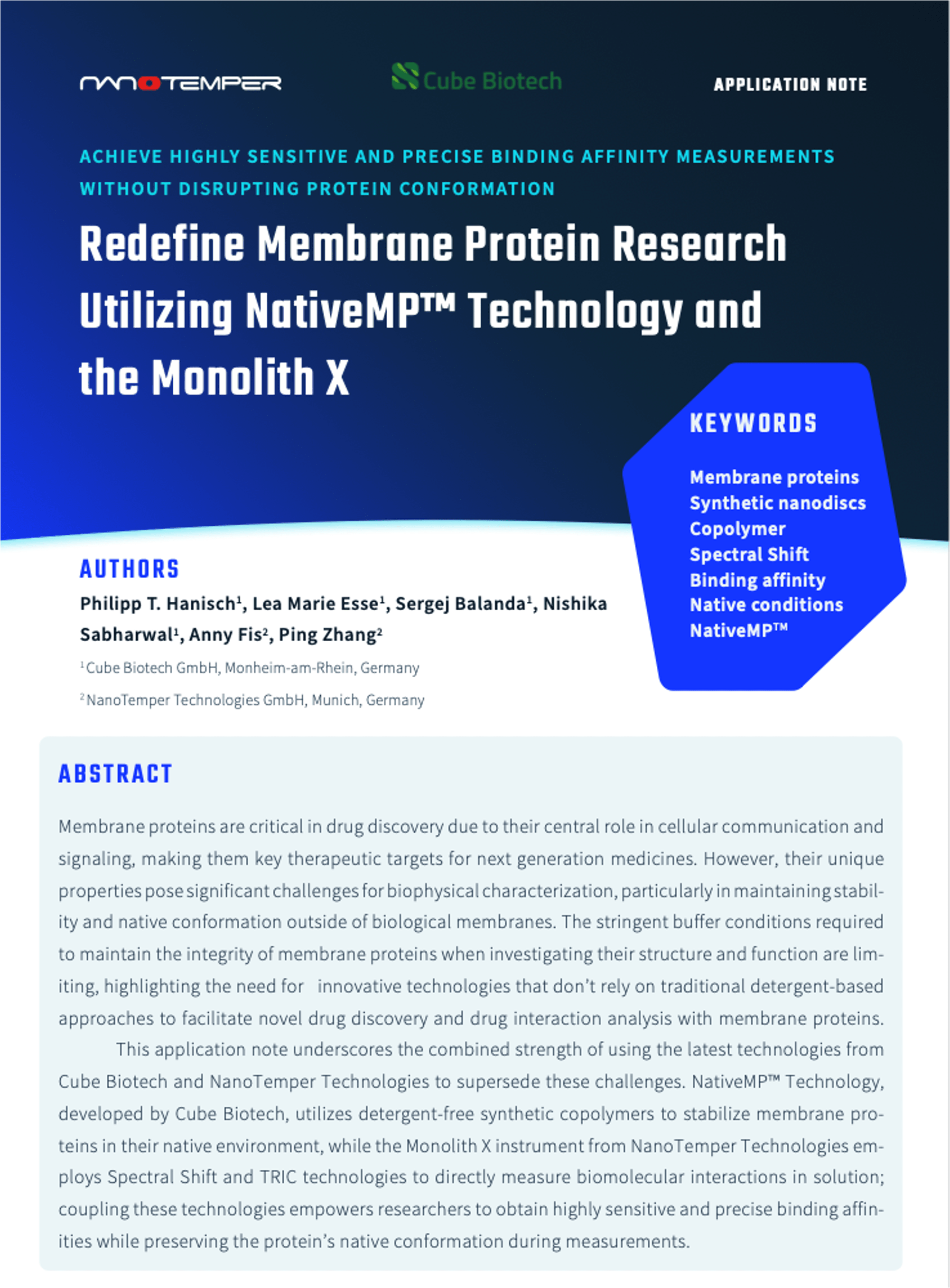Haffke, M., Fehlmann, D., Rummel, G., et al.
Nature 2019, vol: 574 doi: 10.1038/s41586-019-1663-8
Abstract
The tricarboxylic acid cycle intermediate succinate is involved in metabolic processes and plays a crucial role in the homeostasis of mitochondrial reactive oxygen species. The receptor responsible for succinate signalling, SUCNR1 (also known as GPR91), is a member of the G-protein-coupled-receptor family and links succinate signalling to renin-induced hypertension, retinal angiogenesis and inflammation. Because SUCNR1 senses succinate as an immunological danger signal—which has relevance for diseases including ulcerative colitis, liver fibrosis, diabetes and rheumatoid arthritis—it is of interest as a therapeutic target. Here we report the high-resolution crystal structure of rat SUCNR1 in complex with an intracellular binding nanobody in the inactive conformation. Structure-based mutagenesis and radioligand-binding studies, in conjunction with molecular modelling, identified key residues for species-selective antagonist binding and enabled the determination of the high-resolution crystal structure of a humanized rat SUCNR1 in complex with a high-affinity, human-selective antagonist denoted NF-56-EJ40. We anticipate that these structural insights into the architecture of the succinate receptor and its antagonist selectivity will enable structure-based drug discovery and will further help to elucidate the function of SUCNR1 in vitro and in vivo.
Topics: Prometheus, nanoDSF, Membrane Proteins, Publications










